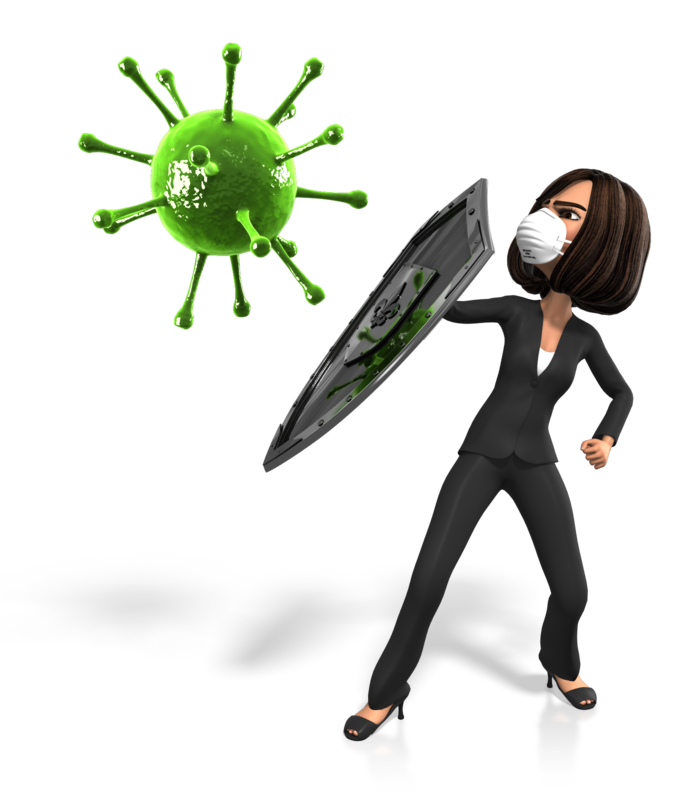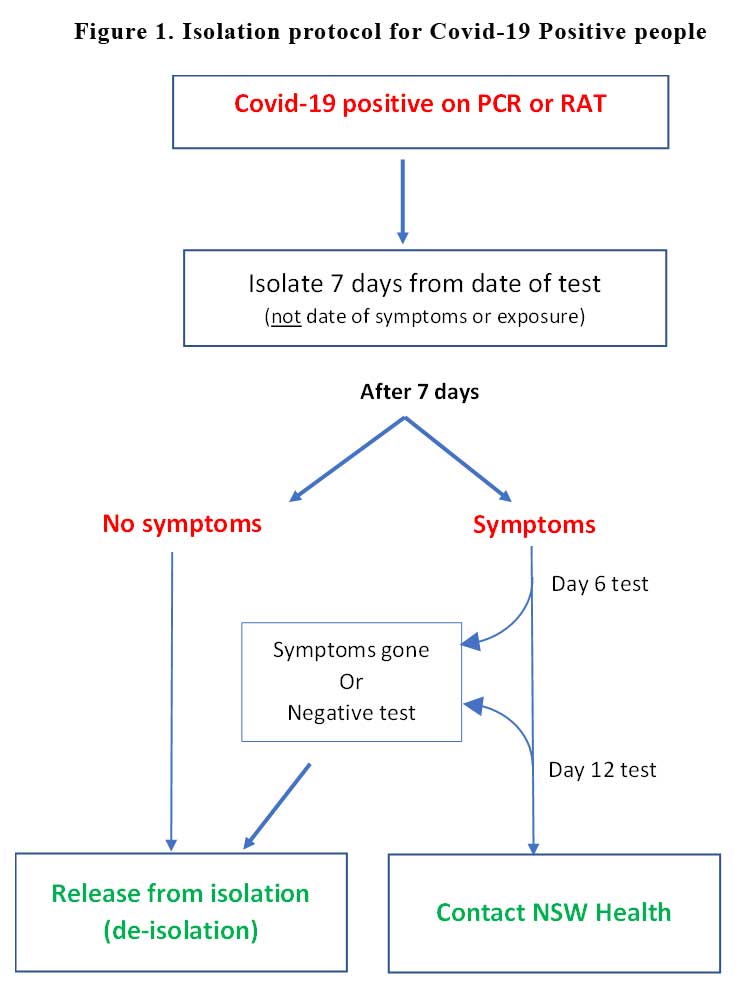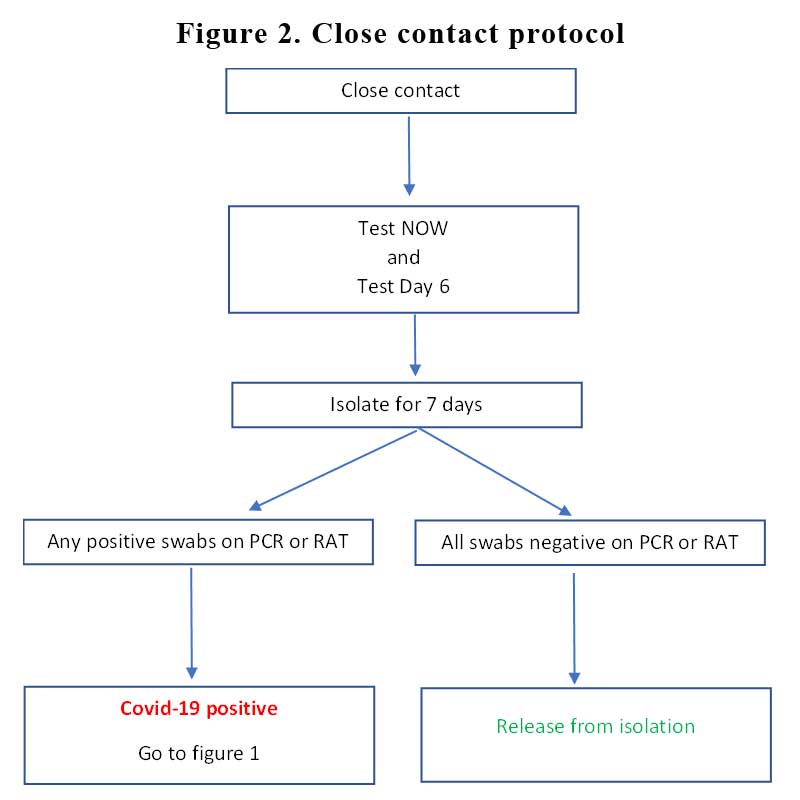January 7th, 2022, Dr Chee L Khoo

There is a trend across the medical specialties to make their guidelines a live document as emerging data comes thick and fast these days. 12 months is a long time for once a year updates. But when you have guidelines or protocols that are updated on a daily basis, it could mean that either there are really, really lots of data coming through or those guidelines are not based on scientific data. With the omicron wave, the constantly changing updates can’t be based on science. I have been trying to provide an update on how we are meant to do our job as GPs for weeks now but they keep changing the recommendations and protocols. Announcements from NSW Health, Federal Health, the prime minister and the RACGP are not in tandem. As GPs we are left to sort out the mess ourselves.
I will attempt to simplify the rules of isolation and testing for both our patients as well for us, the health care workers (HCW) but I obviously run the risk of the article being out of date as soon as this is published but here goes. So, what do we need to know?
People who tested positive for Covid-19
As you are aware, polymerase chain reaction (PCR) testing is now pretty much synonymous with rapid antigen test (RAT). The results of the RAT do not need to be confirmed by a PCR test. Much of following is based on the chart from federal health but I have made it more readable and functional. See Figure 1.

Essentially, you isolate for 7 days if you have no symptoms by day 7. If you still have symptoms, you might be still infectious or you might have other reasons to have symptoms (e.g sinus congestion or infection, chest infection etc). A negative swab on day 6 can rule out ongoing Covid-19 and you are free to be released.
If you test positive on day 6, then you are still infectious and you should still isolate. You will need another swab on Day 12 unless you have no symptoms before then. Once the symptoms are gone or you test negative, you are released.
If you have symptoms after day 12, then you better contact NSW Health.
Although the Prime Minister has suggested that you contact your GP when you test positive on RAT, I am not sure why. Victorian Health have set up a web site for patients to notify the state health department of the positive results. No arrangements are made here in NSW. We are still working on the algorithm as to who can be managed at home safely (with support from their GPs), who needs more than home care and how does one escalate care. That’s for another day. I will keep you updated when the dust settles on that one.
Close contact with someone who tested positive for Covid-19
You are considered a Close Contact if you are living with someone who has COVID-19, have spent 4 hours or longer with someone in a home or health or aged care environment since they developed COVID-19. You are supposed to follow Protocol 2 or 3 depending on whether they have symptoms or not but the illustrated boxes provided is just too confusing for me.
Try this instead. See Figure 2.

Essentially, all close contacts must isolate for 7 days and need two swabs (PCR or RAT – whatever you can access) – one ASAP and another on Day 6 of the last day of contact. If either of the swabs are positive, you have contracted covid and your isolation period start counting again. Follow the protocol for someone who tested positive (see Figure 1).
If either or both the swabs test negative, you are released from isolation.
No contact or just casual contact
Nothing to do. Monitor for symptoms. Test if there are any symptoms. If test positive, follow Figure 1.
No known contact but unexpected positive RAT
Repeat RAT within 24 hours. If positive, need PCR to confirm. If negative the next day, consider the first positive as false positive.
Healthcare workers are special (1)

There will be three scenarios for health care workers:
Positive covid-19 test – whether PCR or RAT
Isolate like everyone else – 7 days. See Figure 1.
Close or casual contact including household contacts
Do not attend work for 7 days if possible but if not, daily RAT swabs for 7 days. Supposedly, PCR on day 2 and day 6 but since PCR and RAT are now synonymous, daily RAT will suffice. Of course, if positive then refer to Figure 1.
For 14 days post exposure
- Consider redeploying to lower patient risk area if possible
- Mask wearing at all times – surgical or N95
- **Do not enter shared spaces such as tearooms and do not participate in any staff gatherings in the workplace where masks are likely to be removed
- Careful monitoring for symptoms
Exposed to patient who tested positive
Refer to the Risk Matrix for HCW.
If the exposure is considered low risk:
- Continue to work
- Alert to mild symptoms
- Test (PCR) if symptomatic
Reference:
